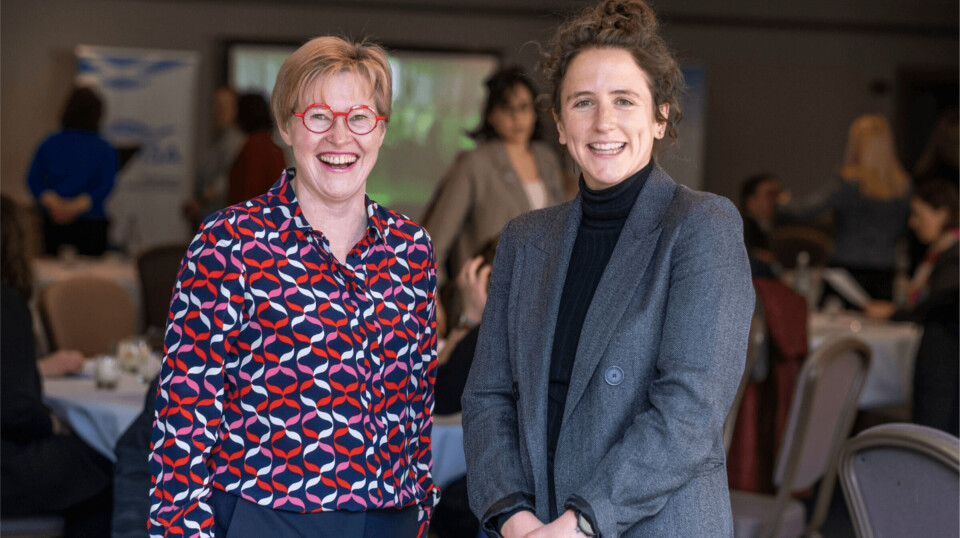
Government ‘working with partners’ to find money for SAIC after funding bid fails
Ministers want to ensure value and expertise of aquaculture innovation centre is retained
The Scottish Government is looking at alternative funding for the Sustainable Aquaculture Innovation Centre (SAIC) after the quango was unsuccessful in its application for renewed funding from the Scottish Funding Council (SFC).
SAIC, which drives and helps fund research into some of the salmon sector’s most pressing challenges, received an £11.1 million funding package in 2014 for its first five-year phase. In 2019, it received £10m provided by the Scottish Funding Council, Scottish Enterprise, and Highlands and Islands Enterprise (HIE) – all part of the Scottish Government - to fund it until July 2024.
Although the SFC’s primary purpose is to invest around £2 billion a year in Scotland’s 19 universities and 24 colleges, it has also funded Scotland’s seven innovation centres as their work is interlinked with academia. SAIC applied to the SFC for funding for the next five years but was turned down after the SFC reviewed its innovation centre programme.
Alternative funding
A Scottish Government spokesperson said the government supports the sustainable development of Scotland’s aquaculture sector and that innovation is key to addressing many of the challenges it faces.
“In light of the outcome of the Scottish Funding Council’s review into the Innovation Centre programme, the Scottish Government is working closely with the SFC, SAIC, and other partners on the next steps of the process. This includes alternative delivery and funding arrangements for SAIC, ensuring the value and expertise which SAIC offers to innovation in a key marine sector is retained. It is too early to confirm what such arrangements will be.”
The Scottish Government is working on alternative delivery and funding arrangements for SAIC. It is too early to confirm what such arrangements will be
SAIC acts as a link between industry and academia, and is often the minority funder, with salmon producers paying more of the costs for university research relevant to their business. SAIC points out on its website that it has a “leverage rate” of 1:5.6, which means that for every £1 invested in the innovation centre, it generates £5.60 of industry and third-party funding into research to solve challenges in Scottish aquaculture.
60% from industry
Referring to a 2021 independent economic impact report based on 60 SAIC projects, SAIC says that the total value of the projects was £52.7m. Of this, 60% (£31.4m) was contributed directly by industry partners.
For these 60 research projects, SAIC leveraged a further £9.8m of external funding from other UK and EU sources.
“In other words, SAIC has turned £8.8m of public funding into more than double that amount by bringing a further £9.8m from other UK and EU funding sources into Scottish research and innovation projects,” the Centre says.
SAIC has also formed the SAIC Consortium, collaborative body of over 350 businesses and organisations, to improve networking in the aquaculture sector.
Business as usual
Speaking about the SFC decision not to renew funding, a spokesperson for SAIC told Fish Farming Expert: “When SAIC, along with the other innovation centres, was created nearly a decade ago, it was always intended that the funding model with the Scottish Funding Council would change over time. During the latest review process undertaken by the SFC, it was decided that the current model was no longer suitable, and we have now decided to seek out alternative options.
“Innovation in aquaculture continues to be a priority for Scotland and our partners, including the Scottish Government, and SAIC’s mission remains the same: to maximise the economic potential of Scotland’s aquaculture sector through innovation, while minimising its environmental footprint. We are working closely with the Scottish Government, the Scottish Funding Council and other partners on our funding and delivery arrangements beyond July 2024, and we know there is a strong desire to ensure that we can continue our impactful work into the future. It is business as usual for SAIC and we are confident of a bright future delivering for the sector.”
Difficult decisions
A spokesperson for the Scottish Funding Council said: “In a challenging financial environment, SFC has reviewed the Innovation Centre programme to ensure that our investments are aligned to our strategic priorities and our statutory duties of investing in excellent research and innovation and securing the undertaking of research and knowledge exchange among colleges and universities. This did mean we had to make some difficult decisions. These were based on a robust, objective, and independent review process. We are working through next steps with all partners, including SAIC, co-funders, the Scottish Government, and the University of Stirling as host institution.”
SAIC has funded 100 projects, of which 40 are still running. These include:
- a 24-month, £467,000 project to assess and improve management tools to optimise environmental management and disease control for salmonid farming in fresh water
- a 42-month, £2.4m project to identify actions and measures that can be used to prevent, reduce, or treat gill disease in farmed salmon
- a 30-month, £982,000 real-time modelling project to produce and rapidly disseminate alerts about harmful algal blooms to support Scottish finfish aquaculture
- a £532,000 project provide the salmon sector with a serum biomarker panel to enable practical, non-lethal and early differential diagnostics of cardiomyopathy syndrome (CMS), heart and skeletal muscle inflammation (HSMI) and pancreas disease (PD)
Salmon farmers Mowi Scotland, Scottish Sea Farms, and Cooke Aquaculture Scotland are each involved in one or more of the above projects.






















































